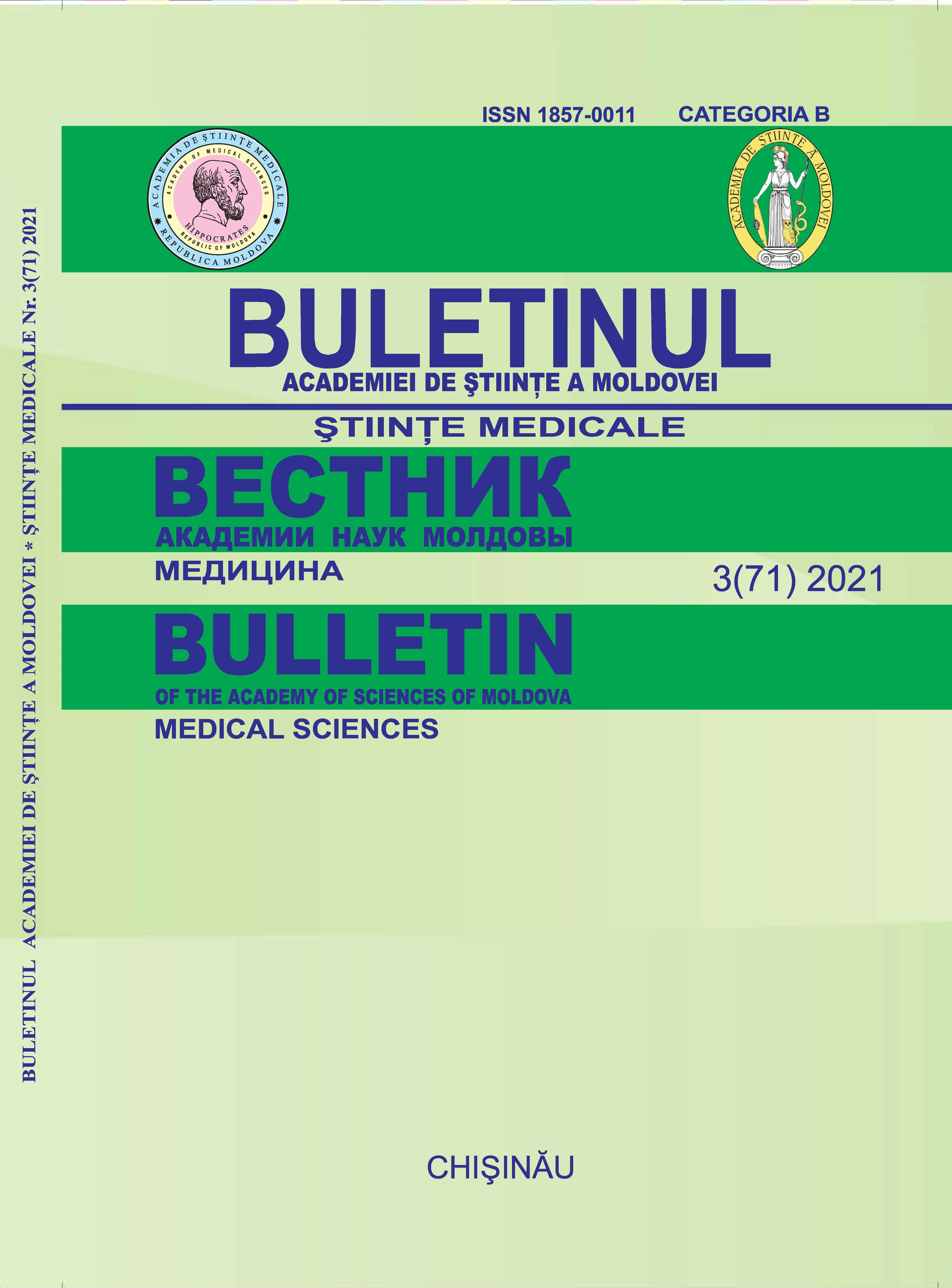DIAGNOSTICUL DIFERENȚIAT AL DEMENȚEI ÎN HIDROCEFALIA NORMOTENSIVĂ IDIOPATICĂ
DOI:
https://doi.org/10.52692/1857-0011.2021.3-71.26Cuvinte cheie:
hidrocefalie normotensivă,, demență, tulburări de mersRezumat
Hidrocefalia normotensivă idiopatică (HNTI) este o maladie care afectează persoanele în vârstă, caracterizată prin triada clasică de apraxie a mersului, incontinență urinară, și deficit cognitiv minor sau demență , iar explorările imagistice cerebrale denotă prezența ventriculomegaliei și presiune normală a lichidului cefalo-rahidian la puncție normală. Această maladie trebuie să fie în lista de diagnostic diferențiat al pacienților care se prezintă cu manifestările sus numite. Dacă diagnosticul de HNTI este confirmat, acesta trebuie tratat într-un stadiu incipient.Referințe
G.J. Zipfel, Normal pressure hydrocephalus, J. Neurosurg. 121 (2014) 769. https://doi.org/10.3171/2014.2.JNS132478.
J.D. Graff-Radford NR, Normal Pressure Hydrocephalus,Continuum (N. Y). (2019) 307–311. https://doi.org/10.1016/B978-0-12-374105-9.00494-9.
L.M. Oliveira, R. Nitrini, G.C. Román, Normal-pressure hydrocephalus: A critical review, Dement. e Neuropsychol. 13 (2019) 133–143. https://doi.org/10.1590/1980-57642018dn13-020001.
N. Relktin, A. Marmarou, P. Klinge, M. Bergsneider,P.M.L. Black, INPH guidelines, part II: Diagnosing idio-pathic normal-pressure hydrocephalus, Neurosurgery. 57 (2005) 4–16. https://doi.org/10.1227/01.NEU.0000168185.29659.C5.
J.J. Halperin, R. Kurlan, J.M. Schwalb, M.D. Cusimano, G. Gronseth, D. Gloss, Practice guideline: Idiopathic normal pressure hydrocephalus: Response to shunting and predictors of response, Neurology. 85 (2015) 2063–2071. https://doi.org/10.1212/WNL.0000000000002193.
M.F. De Oliveira, R.C. Reis, E.M. Trindade, F.C.G. Pinto, Evidences in the treatment of idiopathic normal pressure hydrocephalus, Rev. Assoc. Med. Bras. 61 (2015) 258–262. https://doi.org/10.1590/1806-9282.61.03.258.
K.I. Tudor, M. Tudor, J. Mccleery, J. Car, Endoscopic third ventriculostomy (ETV) for idiopathic normal pressure hydrocephalus (iNPH), Cochrane Database Syst. Rev. 2015 (2015). https://doi.org/10.1002/14651858.CD010033.pub2.
K.C. London, T.L.S. of Economics, World Alzheimer Report 2011 The benefits of early diagnosis and intervention Alzheimer’s Disease International World Alzheimer Report 2011 The benefits of early diagnosis and intervention, World Alzheimer Rep. 2015. (2014). https://www.alz.co.uk/research/WorldAlzheimerReport2011.pdf.
K. Kantarci, R. Avula, M.L. Senjem, A.R. Samikoglu,B. Zhang, S.D. Weigand, S.A. Przybelski, H.A. Edmonson,P. Vemuri, D.S. Knopman, T.J.Ferman, B.F. Boeve,R.C. Petersen, C.R. Jack, Dementia with Lewy bodies and Alzheimer disease: Neurodegenerative patterns characterized by DTI, Neurology. 74 (2010) 1814–1821. https://doi.org/10.1212/WNL.0b013e3181e0f7cf.
M. Prince, M. Guerchet, M. Prina, Policy Brief:The Global Impact of Dementia 2013–2050, Alzheimer’s Dis. Inter. (2013) 1–8. https://www.alz.co.uk/research/GlobalImpactDementia2013.pdf.
G.S. Alexopoulos, Vascular Disease, Depression,and Dementia, (2003) 1178–1180.
G. Livingston, A. Sommerlad, V. Orgeta, S.G.Costafreda, J. Huntley, D. Ames, C. Ballard, S. Banerjee,A. Burns, J. Cohen-Mansfield, C. Cooper, N. Fox, L.N.Gitlin, R. Howard, H.C. Kales, E.B. Larson, K. Ritchie, K.Rockwood, E.L. Sampson, Q. Samus, L.S. Schneider, G.Selbæk, L. Teri, N. Mukadam, Dementia prevention, intervention,and care, Lancet. 390 (2017) 2673–2734. https://doi.org/10.1016/S0140-6736(17)31363-6.
C. Iadecola, The overlap between neurodegenerative and vascular factors in the pathogenesis of dementia,Acta Neuropathol. 120 (2010) 287–296. https://doi.org/10.1007/s00401-010-0718-6.
H. Barthel, M.L. Schroeter, K.T. Hoffmann, O.Sabri, PET/MR in dementia and other neurodegenerative diseases, Semin. Nucl. Med. 45 (2015) 224–233. https://doi.org/10.1053/j.semnuclmed.2014.12.003.
I.H.K. Leung, C.C. Walton, H. Hallock, S.J.G.Lewis, M. Valenzuela, A. Lampit, Cognitive training in Parkinson disease: A systematic review and meta-analysis, Neurology. 85 (2015) 1843–1851. https://doi.org/10.1212/WNL.0000000000002145.
J.T. Anger, C.S. Saigal, M.S. Litwin, The prevalence of urinary incontinence among community dwelling adult women: Results from the National Health and Nutrition Examination Survey, J. Urol. 175 (2006) 601–604. https://doi.org/10.1016/S0022-5347(05)00242-9.
B.W. Starr, M.C. Hagen, A.J. Espay, Hydrocephalic Parkinsonism: lessons from normal pressure hydrocephalus mimics, J. Clin. Mov. Disord. 1 (2014) 2. https://doi.org/10.1186/2054-7072-1-2.
Descărcări
Publicat
Număr
Secțiune
Licență
Copyright (c) 2022 Buletinul Academiei de Științe a Moldovei. Științe medicale

Această lucrare este licențiată în temeiul Creative Commons Attribution 4.0 International License.



